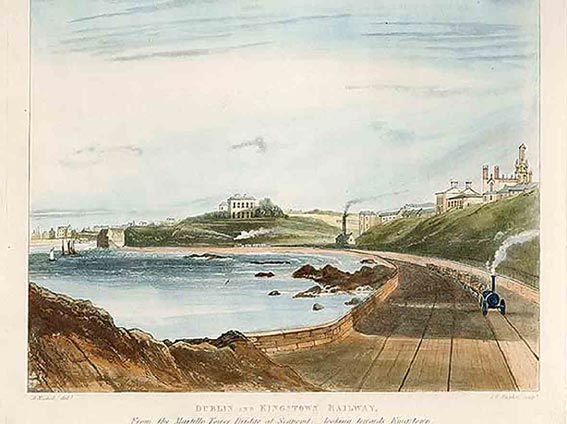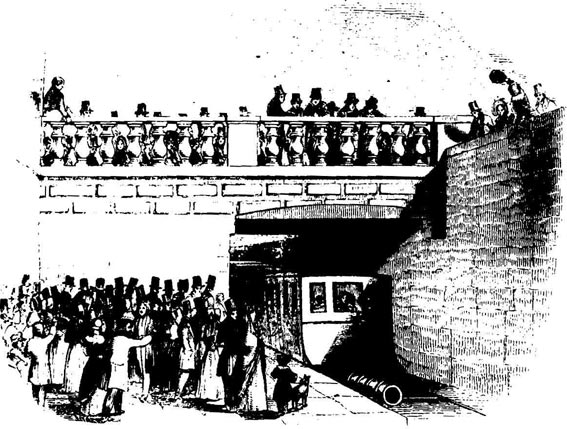
The Religious Society of Friends (Quakers) in Ireland
Monkstown Quakers and the Railways

The Dublin and Kingstown Railway at Monkstown, 1834
The involvement of Quakers in the Dublin and Kingstown Railway continued through the lifetime of the company. When they began to manufacture their own locomotives - the first railway company in the world to do so - it was a Quaker, Richard Pim, who was the engineer involved. One of his apprentices, Samuel Haughton, another Quaker, later looked after the building of engines. The involvement of these engineers and the directors led to the locomotives on the Dublin and Kingstown line being known as "Quaker engines".
The opening of the Dublin and Kingstown Railway in 1834 had an immense effect on the development of the area along the line, particularly in Dun Laoghaire and Monkstown and, to a lesser extent, in Blackrock. The ease with which people could commute to work in the city and the reasonable cost of season tickets ensured that many more people, Quakers included, left the city to live in Dun Laoghaire and Monkstown.

Atmospheric Railway at Kingstown - now Dun Laoghaire DART station
In 1844 the Dublin and Kingstown Railway Company added another first to its original achievement by opening a line between Kingstown and Dalkey. This was done by using a brand-new technology - the Atmospheric Railway - which was promoted by James Pirn, the company's Quaker secretary. This system had a broad pipe on the track bed in which there was a piston connected to the train. Instead of being on the train the engine was in a building at Dalkey and was used to suck the air out of the tube - the resulting vacuurn sucked the piston, and with it the train, up hill to Dalkey. To return, the brakes were let off and gravity did the rest!